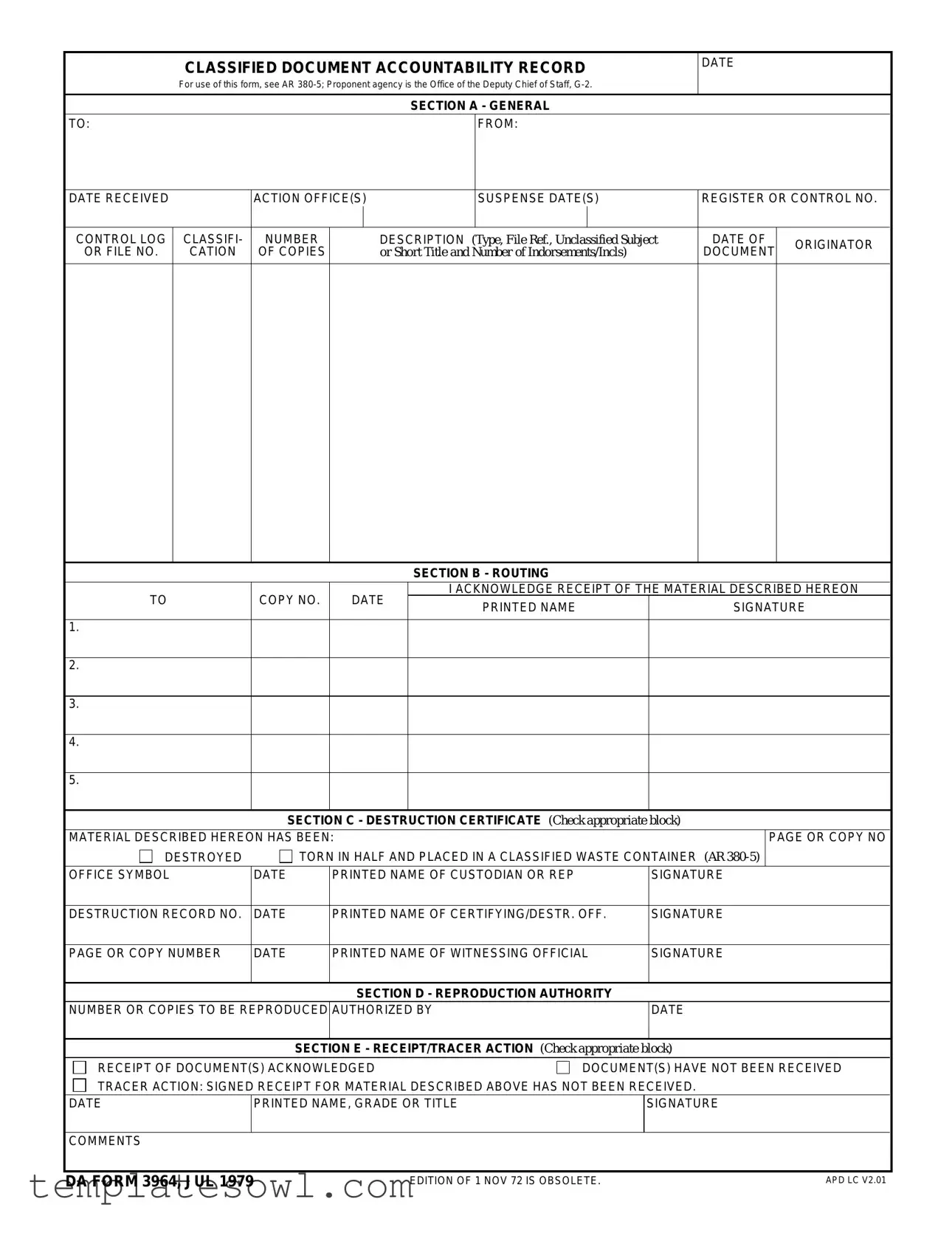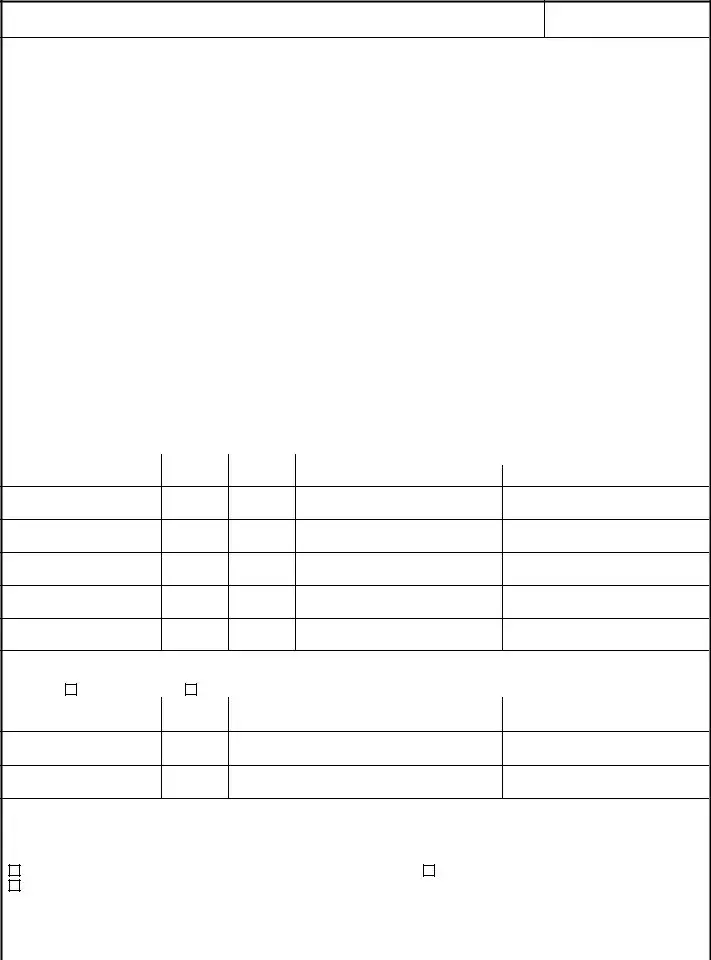What is the DA Form 3964 used for?
The DA Form 3964 is a Classified Document Accountability Record. It serves to track and document the receipt, distribution, and destruction of classified materials within the U.S. Army. This form ensures that sensitive information is managed properly and that all actions taken regarding classified documents are recorded for accountability purposes.
Who is responsible for filling out the DA Form 3964?
What information is required on the DA Form 3964?
Essential information includes the date, originator of the document, control number, a description of the classified document, and the routing details. Additionally, acknowledgments of receipt and destruction certifications need to be attached to maintain complete accountability for the classified documents.
How do I acknowledge receipt of a classified document on the DA Form 3964?
To acknowledge receipt, the receiving individual must sign and print their name in the designated area on the form. This action confirms that the material described has been received in good order. It is critical to complete this section to ensure proper tracking of classified documents.
What should be done with the DA Form 3964 when classified materials are destroyed?
When classified materials are destroyed, the DA Form 3964 must be updated to reflect this action. The appropriate section must be checked to indicate the method of destruction, and signature entries from the custodian and certifying officer should be added. This maintains a record of how and when the particular document was disposed of, enhancing accountability.
What is the significance of the suspense date on the DA Form 3964?
The suspense date indicates the deadline by which actions concerning the classified document must be completed. This date helps personnel prioritize tasks related to the document and ensures timely handling of sensitive information, which is crucial for national security.
Can the DA Form 3964 be used for unclassified documents?
No, the DA Form 3964 is specifically designed for managing classified documents. For unclassified materials, separate procedures and documentation are in place. It is critical to use the appropriate forms as per the classification of the document to ensure compliance with regulations.
Where can I find the most current version of the DA Form 3964?
The latest version of the DA Form 3964 can typically be obtained through the official U.S. Army publications and forms website. Always ensure you are using the most up-to-date form for your documentation to comply with current policies and procedures.

